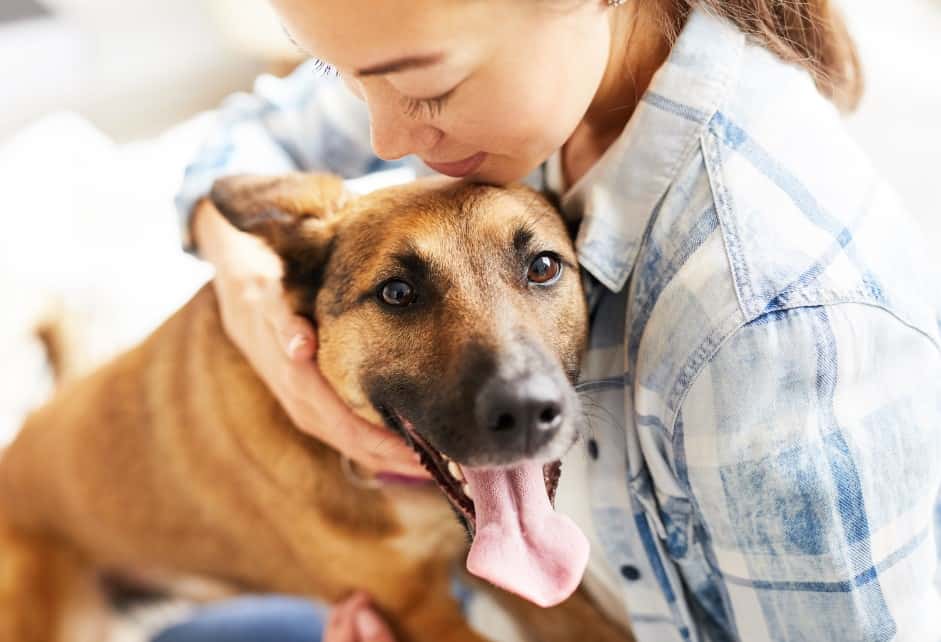Each year, approximately 3.3 million dogs are surrendered to animal shelters across the United States. Despite the common misconceptions, the vast majority of these dogs are healthy and well-behaved. They simply require a safe environment they can call home.
May 20th is observed as National Rescue Dog Day. The aim of this day is to raise awareness of the dogs who remain in shelters and need to be adopted. We’ve all heard a story about a rescue dog which brings a tear to our eye – in fact, we’ve trained several of them as part of our Second Chance program.
Rescue dogs often have complex, difficult backstories – but these dogs also highlight the importance of resilience, care and love in the face of adversity. If you own a rescue dog, today is your day to celebrate the incredible impact your pup has on your life!
If you’re thinking of adopting a rescue dog, then this article aims to help inform your decision-making process. We also recommend our list of questions you should ask an animal shelter prior to adopting a dog in their care.
Why do dogs end up in shelters in the first place?
Animals may find themselves in a shelter environment for a number of reasons – and not always because of an irresponsible owner!
Although on occasion, a dog may be surrendered to a shelter because of behavioral issues or mistreatment by their previous owner, this isn’t usually the case. Sometimes, the owner’s life circumstances may have changed. For example, they may have had to relocate to a new state; they may have moved to a rented home or apartment which doesn’t accept pets; they may have had a child or another change in family circumstances; the owner may have even passed away.

Statistics about rescue dogs
A significant number of dogs are adopted from rescue shelters across the country, offering these dogs the chance to survive and thrive in a loving family environment. The statistics show just how large a role rescue shelters play in helping dogs to find a new home.
- There are 3,500 animal shelters and 14,000 shelter and rescue groups in the United States.
- Almost a quarter of dogs in the United States are adopted from an animal shelter.
- Approximately 1.6 million dogs are adopted from shelters nationwide every year.
- Dogs that are microchipped are two and a half times more likely to be reunited with their owners, compared with other strays.
Things to consider before adopting a shelter dog
There are so many items to think about before you adopt a dog from a rescue shelter, but there is one question you should consider above all else – are you able to look after this dog and give it a safe, secure and happy environment to live?
All too often (and this is not just the case with rescue dogs – but any dog being brought into a new home) – families do not think about their own suitability as dog owners.

Take a look at your own life and consider your circumstances. Do you have the time to care and train your new dog? Do you have adequate space in your home and yard for the breed you’re choosing? Can you afford to feed the dog and take them to the vet if necessary? These are just some of the aspects of your own life you need to consider before adopting a dog.
If you’re confident you’ll be able to provide a good home for your prospective pup, then read on to discover a few tips you should think about prior to bringing your new friend into your home.
1. Dog proof your home
In the same way as you should childproof your home to prevent accidents with young children, you need to take similar precautions with your new pet. Dogs are curious creatures, and their inquisitive nature can often lead them into trouble. Make sure any loose electrical cords are taped up and any breakable items are out-of reach.
2. Consider where your dog will spend their time in your home
When you first bring your dog home, you’ll want to make sure you have a plan for where they will spend most of their time. This is likely to be a stressful transition for the dog, and they may forget any housebreaking, so any room with a tile or wooden floor – such as a kitchen – may be a good option initially. Make sure you set your dog’s bed and/or crate up before you pick them up.

3. Think about food/treats/water
Consult with the animal shelter to confirm which food the dog has been fed recently, along with the quantities. Keep your dog’s diet consistent for the first few days they return home to avoid any digestive issues. If you plan to transition the dog to a new brand of food, then make sure to do this slowly over the course of a few weeks.
4. Get an ID tag containing your contact information

In advance of going to the shelter, make an ID tag which includes your name, address and telephone number. Your can attach this to your dog when you bring them home. This is pivotal, because in the first few days, your new dog may not be familiar with his surroundings and has an increased likelihood of running away. You should also register their microchip with the chip’s company.
5. Have a training plan
For a happy life with your new pup, you’ll need to make sure they are well-trained. Once they’re settled in your home and have an up-to-date set of vaccinations, you may wish to take them to a group dog training class which can help them to learn basic obedience, or even a specialized skill like search and rescue. Socialization will also be an important aspect to ensure your dog behaves well in a variety of environments.
Owning a rescue dog can be a daunting prospect – particularly in the early stages – but the rewards are definitely worth it! Following these tips will certainly help your new pup to settle into its new home.


You must be logged in to post a comment.